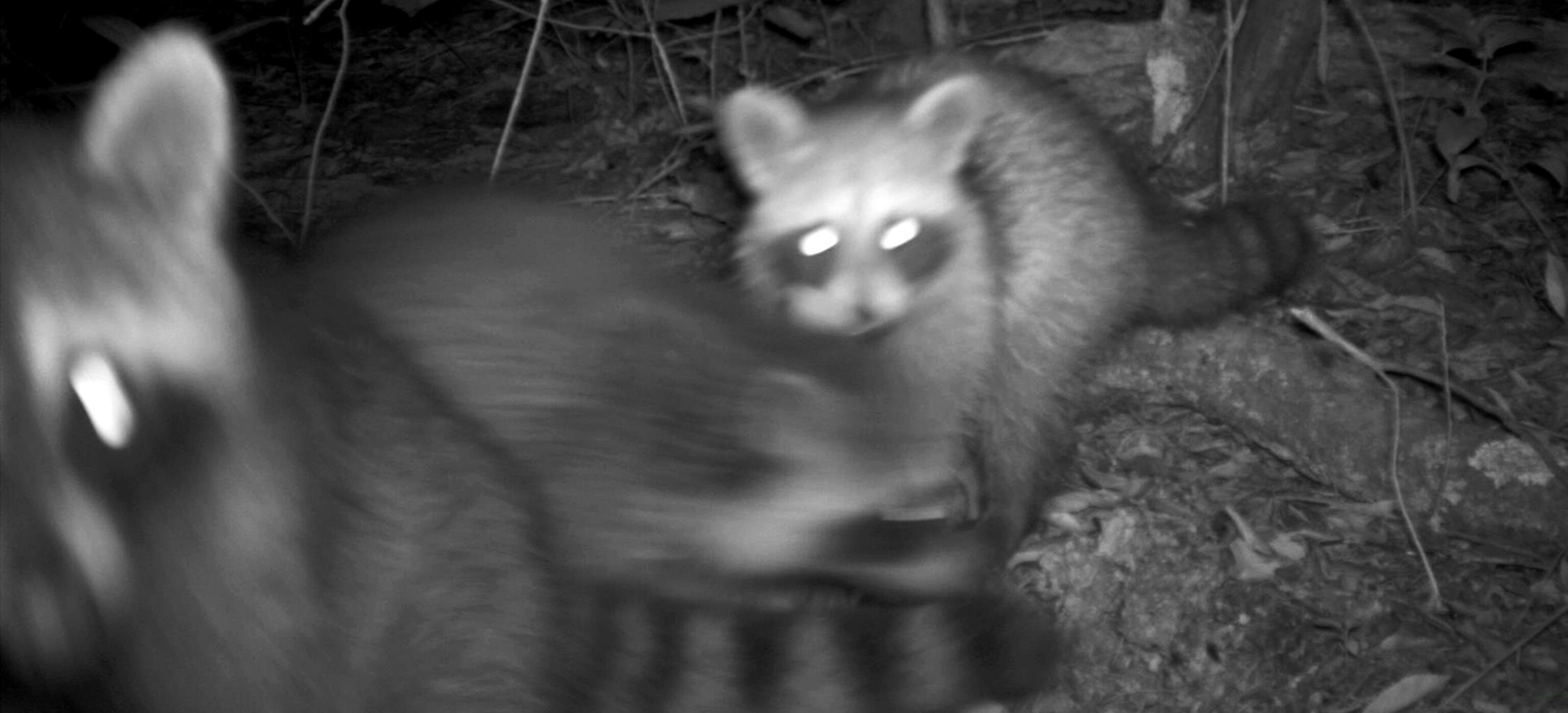
Lee Deigaard: Animal Witness
Many people prefer their safe worlds of concrete and cyberspace—the conquered and the vicarious—to the uncontrollable and unknown forest. They think that nature is best viewed from a car window or consumed as a resource. When they do enter the dark and mysterious “jungle,” they mostly stay on the beaten path.
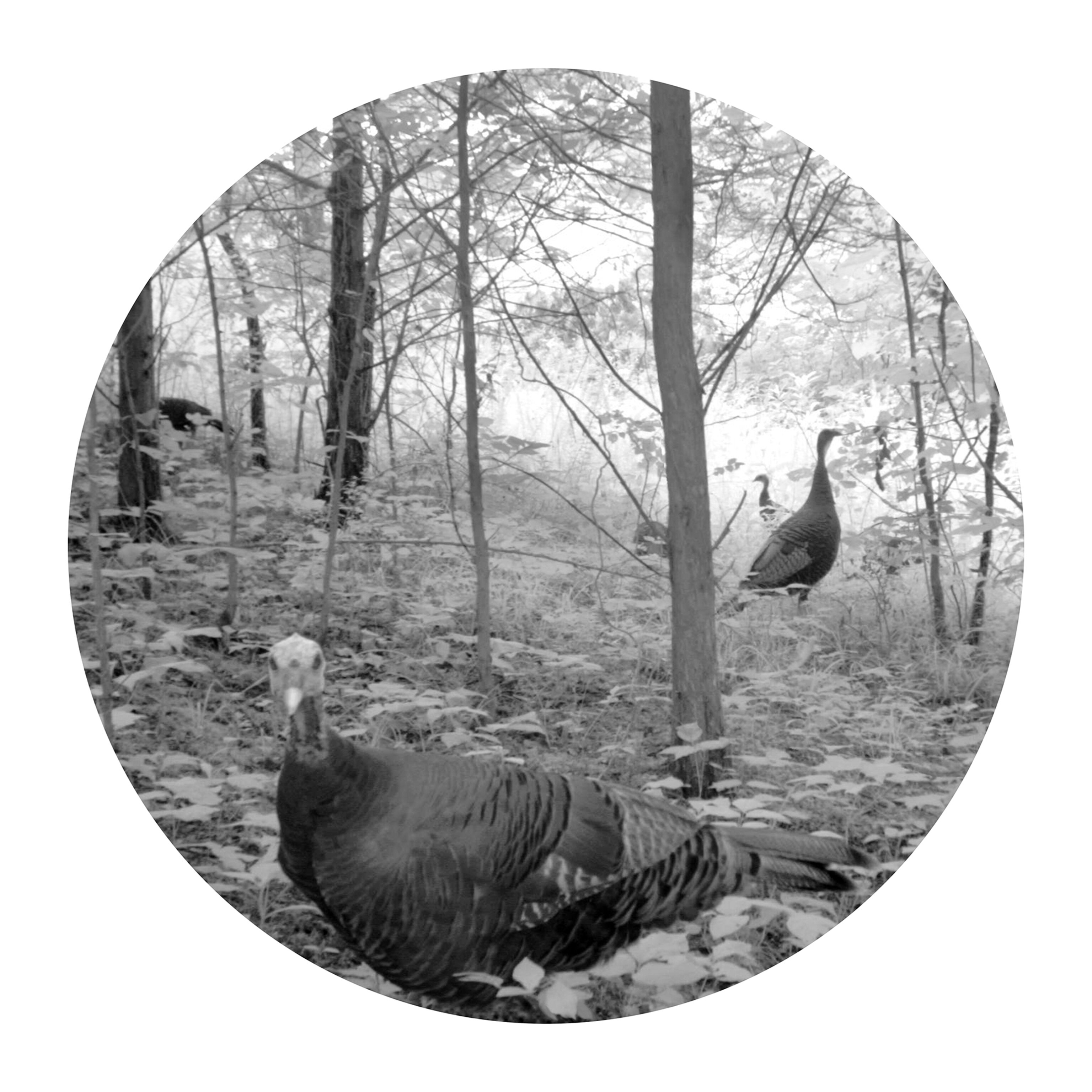
Photographer Lee Deigaard has learned that the woods of her family farm in Georgia contain many gifts, namely peace and quiet. But when she began leaving a camera trap behind in 2007, a more surprising and intimate gift appeared—its inhabitants. Working with a standard infrared trail-monitoring camera—one usually used by hunters—Deigaard captured the critters of the night world. “I was looking for [a camera] that had the quietest shutter and the least obtrusive flash,” she said.
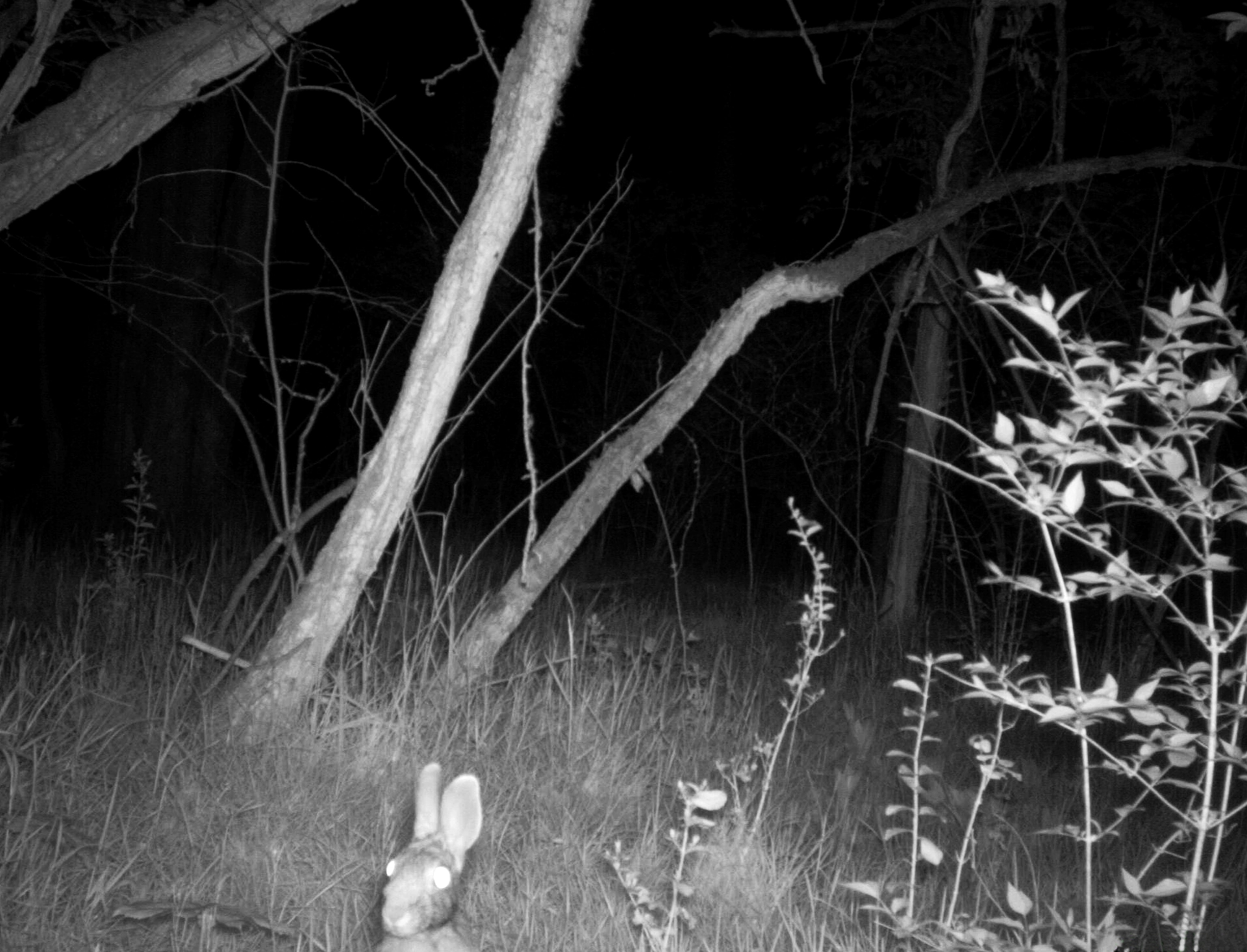
Deigaard’s black and white prints are beautiful and offer an artistic view of the natural world. At first glance, the animals look frightened, frozen like statues, afraid to move, caught by a trespasser’s strange apparatus that makes an unnatural sound. Then as you take in her portfolio, as I did reviewing her work recently at PhotoNOLA in New Orleans, you begin to understand that the animals aren’t frightened at all. They are welcoming—posing as if Deigaard was there directing them. They invite you in and welcome you to their splendid world, free of man’s destructive hand.
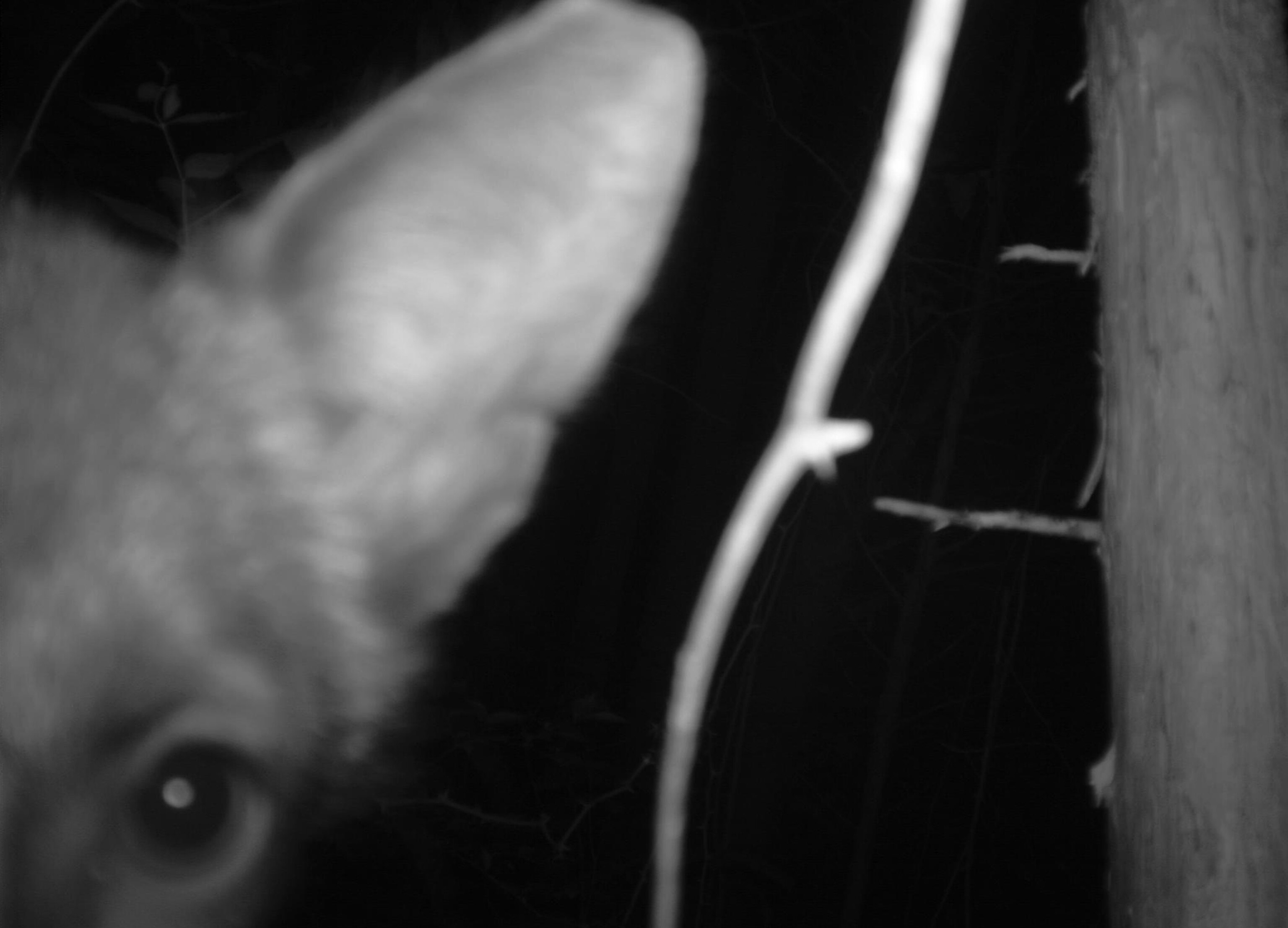
“I’ve worked over a long time to find these individuals,” she said. “And in some ways they choose to collaborate or not. With certain animals—deer, raccoons, bobcats and coyotes, I have real awareness that any sightings of them is because they’re choosing to announce themselves or choosing to participate. Raccoons in particular will offer other means of collaboration that include rearranging the camera.”
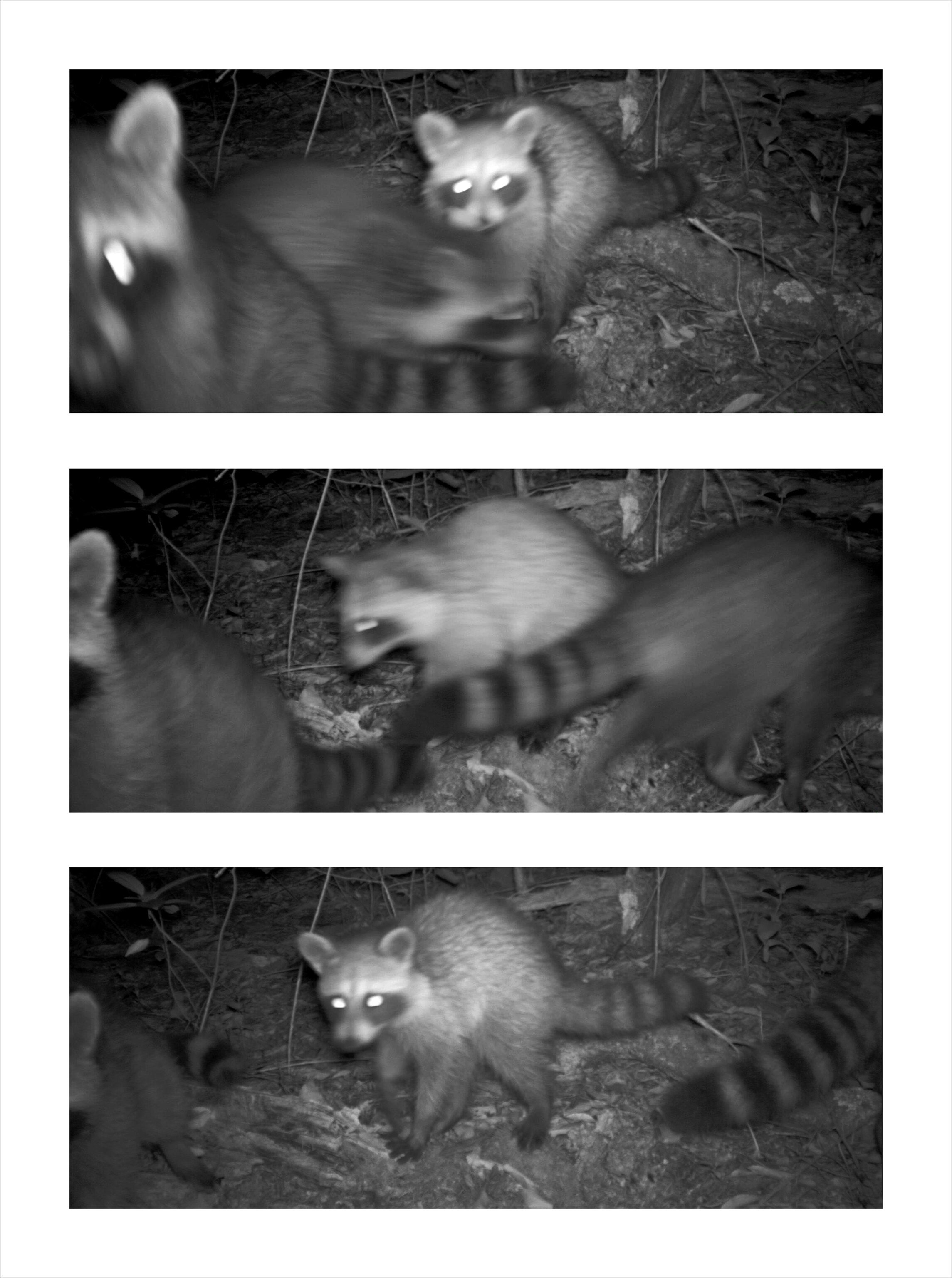
Deigaard’s process is unlike the technique and craft of conventional photography—holding and framing a camera and waiting for the decisive moment. The animals do it all. “It’s very much gather volume and then sift and sort and search for the ones that I think help me explore animal autonomy or protagonism,” she said. “I’m looking at the landscape—the way branches draw and redraw themselves, how the light goes, and then I’m trying to set up these circumstances where an animal might initiate the interaction with something dream-like or magical.”
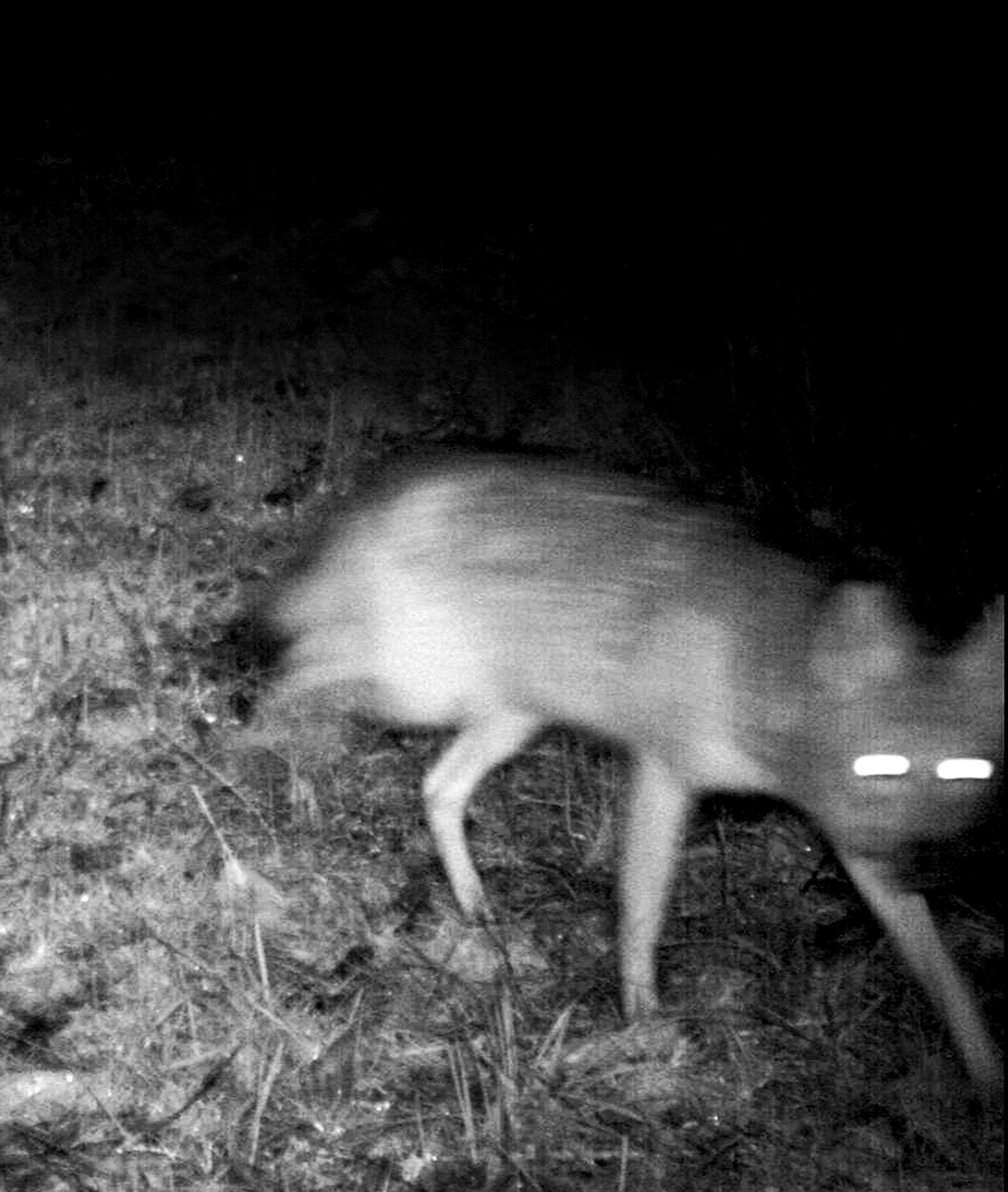
“I hope the animal’s gaze puts people in their place a little bit,” she continued. “I was really drawn to the whiteness of the tapeta lucida (a layer of tissue in the retina that reflects light to allow animals to see better at night) because I want a viewer to meet this gaze and to feel a little bit like you feel when you shine a flashlight into the hills and realize there are all these hidden eyes looking back at you—this sense of being seen.”
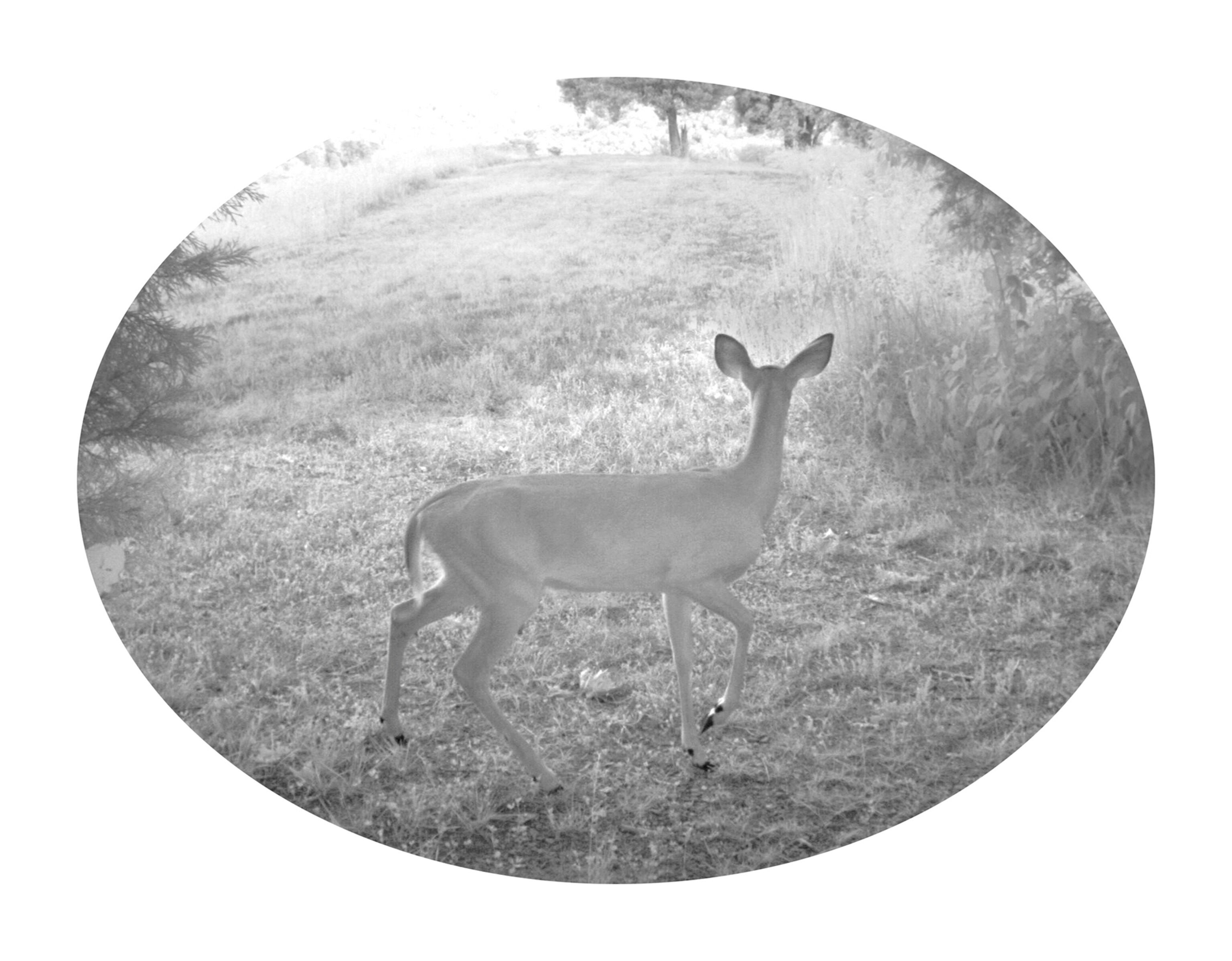
Lee Deigaard has lived in New Orleans since 2002. Trained as a sculptor, she also works in photography, installation, drawing, and video. She won 3rd place in the portfolio review for outstanding projects at this past PhotoNOLA. Images from her project “Unbidden” are on view at The Ogden Museum of Southern Art in New Orleans though April 6, 2014. View more of her work on her website.





